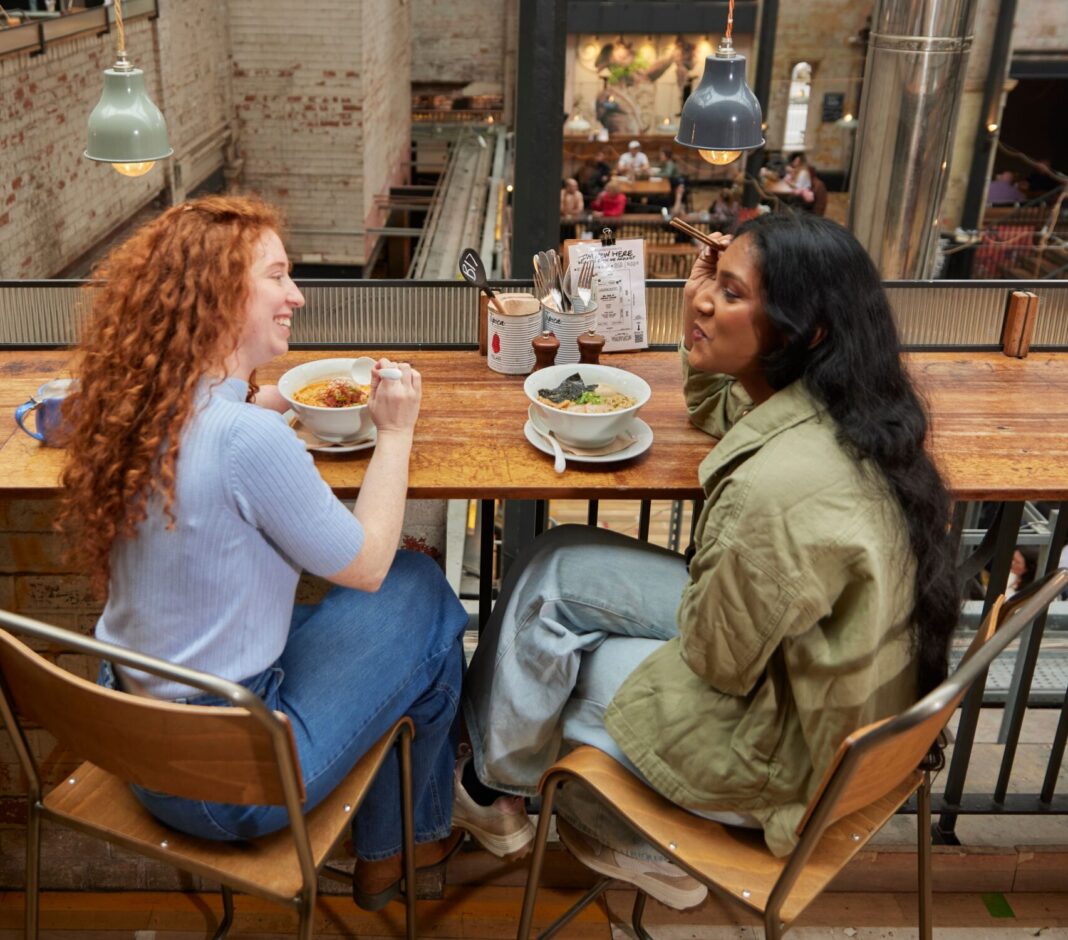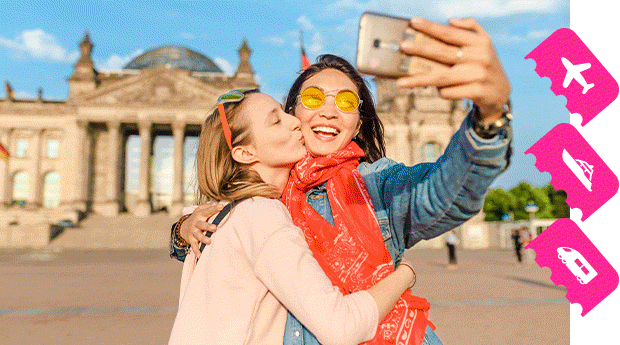First-time visitors to Manchester often find themselves wondering about a few things. How did this industrial city in Northern England come to have such a visible queer population? How did the LGBTQ+ community manage to claim Canal Street, one of the prettiest parts of the city’s downtown, for their gay village? Why are there so many gay bars on and around Canal Street and how is it that they’re so busy? And more flippantly: Are there any straight people in Manchester, which has a metro population of about 2.5 million?
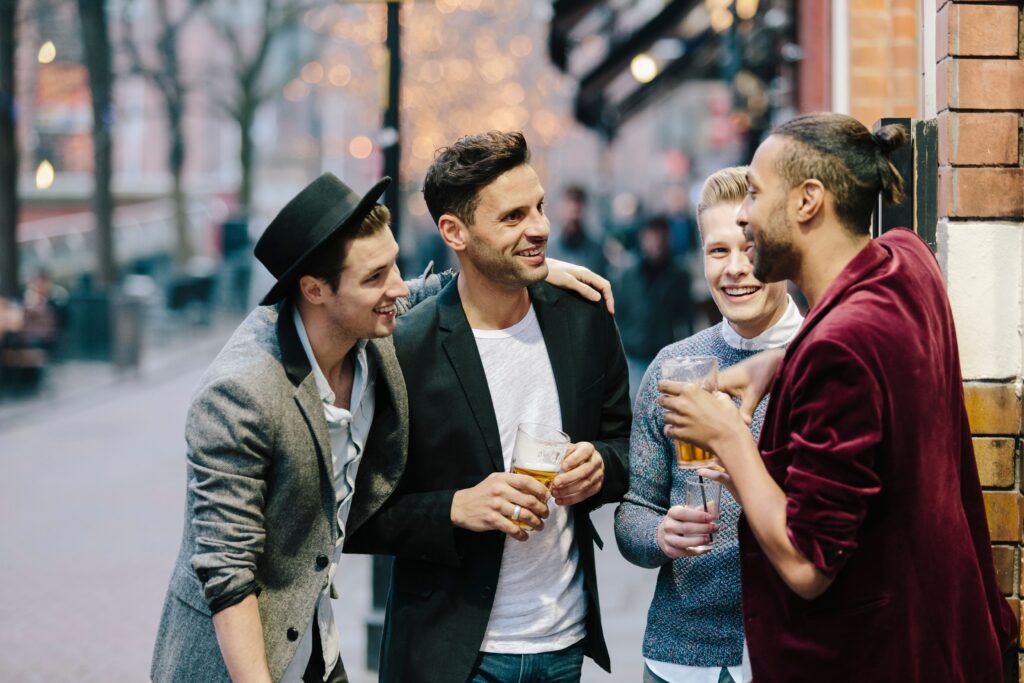
History answers a few of these questions. Documented LGBTQ+ life in Manchester goes back to 1880, when police raided a costume ball and arrested 47 men for “improper actions.” So there was already something of a community more than 140 years ago—and community attracts community. The canal area used to be industrial at a time when goods were moved around the U.K. by ship, and as times changed, that real-estate became available for other uses, including for queer spaces. A pub called Union (now New Union—it still exists) opened on Canal Street in 1865, and by the 1940s, it had already become a place for queer people to meet up, so it makes sense that the gay scene spread out from there.
By 1999, Canal Street was the perfect, pulsing setting for the original Queer as Folk TV series, which featured three gay men living full-on gay lives against a backdrop of dancefloors and hookups, partying, ambition and longing.
The visibility and vibrancy of the queer community is just one aspect of Manchester’s work-hard-play-harder culture—the symbol of the city is the bee, a hard-working insect that loves to congregate with its own kind. (You’ll see street art featuring bees all over the city.)
The enthusiasm for going out is part of the city’s music obsession. Manchester is the city of Oasis (a band which remains something of a religion), Joy Division, New Order, the Stone Roses, the Bee Gees, the Ting Tings, the 1975 and, for queerer tastes, M People, 808 State, Swing Out Sister, Lisa Stansfield, Take That and the Smiths (featuring the now-disgraced, forever-cranky Morrissey). If those names sound a little retro, the annual two-day Parklife Festival, which takes place each June in Heaton Park, demonstrates Manchester’s current cool quotient—they get a lot of hot acts.
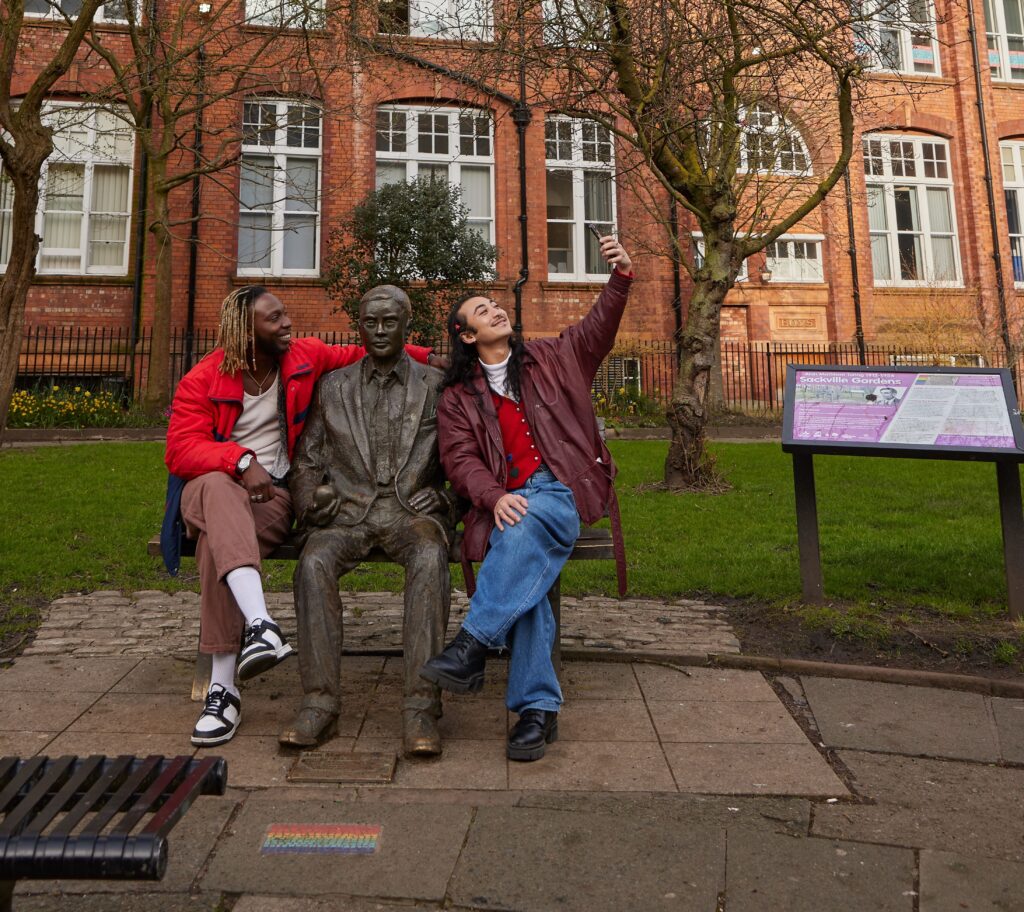
Of course, Manchester has also produced a famous gay nerd. Alan Turing, often called the father of modern computing, was, in the 1950s, persecuted for committing homosexual acts. Barbarically sentenced to chemical castration, Turing died in 1954 at age 41, from cyanide poisoning that might have been suicidal or accidental. The 2014 film The Imitation Game dramatizes some of Turing’s accomplishments, and there’s a memorial statue of Turing in Sackville Gardens, just across from Canal Street. The park is also home to the National Transgender Memorial (which in 2024 was being revamped), the LGBTQ Heritage Trail Rainbow Plaque: Beacon of Hope and, fittingly, a sculpture of a giant bee painted in the rainbow colours. The park is also a nice place to sit with someone you just met on Canal Street.
Of course, there’s stuff to do beyond the village. Known as the birthplace of the industrial revolution, Manchester has an abundance of cultural institutions and handsome 19th-century buildings that were funded by the tycoons of the industrial era. Though the city has deindustrialized, all that lovely architecture makes for great spaces for the trendy boutiques, galleries, restaurants, cafés and bars that make Manchester such a beloved city break for British and European travellers.
It’s all so tightly packed. From Manchester Victoria Station north of the city centre to Oxford Road Station in the south, it’s less than a 25-minute walk. Though the city defines 19 neighbourhoods that are of interest to visitors, some of them are a mere three blocks across.
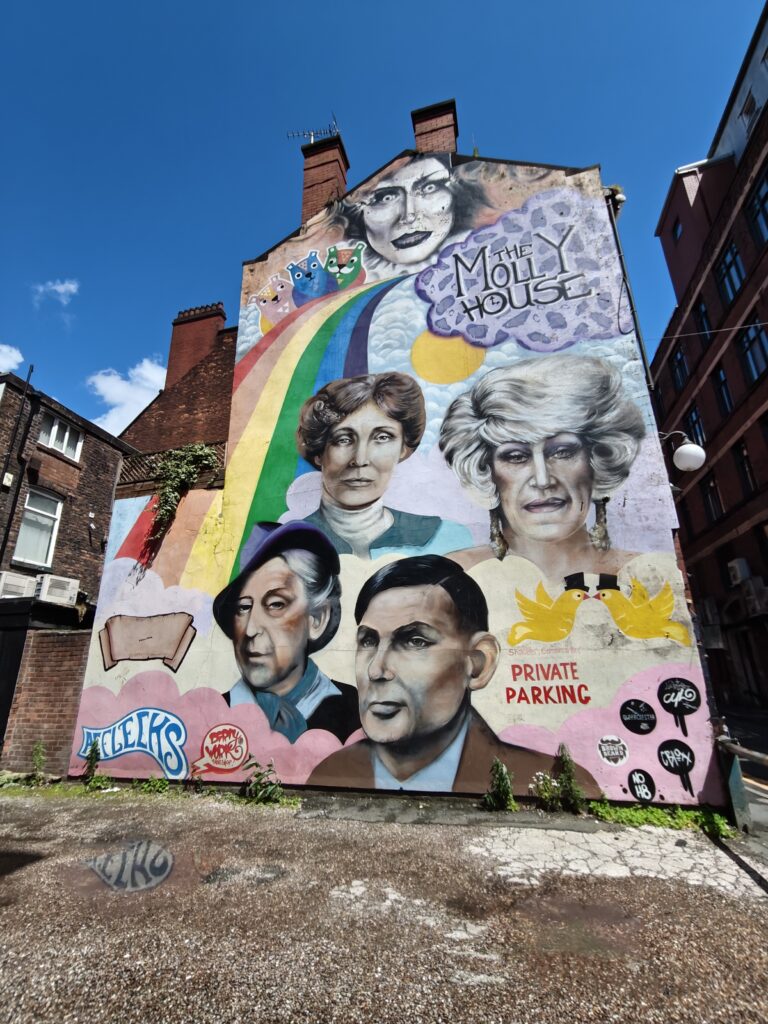
Beyond the city itself, there are nine districts surrounding Manchester proper, each with its own character and history. For visitors doing a longer trip to the U.K., it’s a nice change from humongous London. Don’t worry about pushing yourself to see everything—it’s always a short journey back to the comfort of your hotel bed. Everyone seems so easy-going.
When I got into a hotel elevator wearing a harness and a pair of shorts, a tourist from Iceland also going down told the women who got in at the sixth floor that we were a couple going to a “whips and cream party.” “A whipping cream party? I’m in,” declared one of the women. The Icelander got mad when I told the women I was Canadian. “No, no, we’re a couple. Don’t say that, honey!”
Here’s Pink Ticket Travel’s recommendations for the best of LGBTQ+ Manchester.
Pride
Manchester Pride Festival usually takes place in mid-August. Not just a party, it’s a demonstration of the modern LGBTQ+ history of the city. In 1964, the North West Homosexual Law Reform Committee was formed in Manchester, and five years later it became the national Campaign for Homosexual Equality, which led in changing U.K. laws. The first Manchester Gay Pub and Club Olympics event took place in 1985, a festival event that eventually morphed into Pride. These days, it’s an 11-day celebration, culminating in a parade on the final Saturday. The Gay Village Party is a ticketed event on the final three days of Pride, with a cornucopia of performances on multiple stages supplementing the events happening in the bars. Suburbia is the arts and culture programming stream, with events throughout Pride season and in other parts of the year. Several gay party promoters, including fetish-y Club Alert and Damage, and bear-focused The Big Scrum, host ticketed parties during Pride.
What to see and do
Alan Turing Memorial (Sackville Park, Manchester). The likeness to the man who has been called the father of modern computing is iffy at best, but the location has great meaning. Behind the sculpture, which was unveiled in 2001, is the School of Electrical and Electronic Engineering at the University of Manchester, which would have been a haunt of Turing’s when he was working with the Computing Machine Laboratory starting in 1948. On the opposite side of the park is Canal Street, Manchester’s Gay Village, which reminds us of Turing’s homosexuality and his prosecution for homosexual acts in 1952. He died in 1954 at age 41. Have a seat next to Turing on the bench and think of what it must have been like back then. In front of the statue, visitors will see a small rainbow flag embedded in the concrete, marking Turing as one of the stops on the Manchester LGBT Heritage Trail.
Manchester LGBT Heritage Trail (various locations around Manchester). Inaugurated in 2005, the 19 stops on this self-guided walk mark sites of importance to local LGBTQ+ history, including the above-mentioned Alan Turing Memorial. Though many are clustered around the Gay Village, there are also markers at other spots where good and bad things happened to LGBTQ+ people.
Manchester Cathedral (Victoria St., Manchester). The area around this 13th-century church is a fascinating mishmash of old and new. Across the street from the cathedral is the huge Corn Exchange building, which was completed in 1903 and is topped by a huge dome that survived two bombings during the Second World War; it’s now home to several restaurants and a hotel. The original Old Wellington Inn and Sinclair’s Oyster Bar (4 and 2 Cathedral Gates, Manchester) were built in the 1550s, and moved to their current locations in 1999 after the 1996 Manchester Bombing. A big glass box containing the department store Selfridges (1 Exchange Sq., Manchester) matches the glass boxes of offices across the River Irwell.
Manchester Art Gallery (Mosley St., Manchester). This is one of those art galleries that likes to delight community sentiment as well as push boundaries—and it does so very well. Works by old masters and young queers are woven together in exhibitions that could only be pulled off here. Free.
Manchester Museum (University of Manchester, Oxford Rd., Manchester). At this history museum, “history” is defined as world cultures and natural science—expect Egyptian hieroglyphics, bugs and dinosaur bones. Free.
John Rylands Library (150 Deansgate, Manchester). Look up “Victoria Gothic” in the dictionary and the photos of this place are what you should see. Opened in 1900 as a tribute to textile manufacturer, and Manchester’s first millionaire, John Rylands, the library is now part of the University of Manchester. There are several exhibit rooms, and during Pride season you can expect to see some LGBTQ+ history on display. Free.
HOME (Tony Wilson Place, Manchester). Opened in 2015, this shiny complex is one-stop shopping for culture vultures who come for theatre, dance, film, visual arts, and the café and bookshop. The offerings range from accessible and kid-friendly to edgy, but queer content is usually in the mix. Free to visit.
The Lowry (Pier 8, The Quays, Salford, Manchester). Just a tiny bit less of-the-moment than HOME (and a little farther from the city centre), this also-shiny multifaceted arts centre, which opened in 2000, has its own taste for what’s queer and camp. A recent exhibition called Queens included many pieces referencing the world of drag. Free to visit.
Where to stay
Clayton Hotel Manchester City Centre (55 Portland St., Manchester). A couple of minutes’ walk from Canal Street, but far enough away that you won’t hear the beat of dance music, this LGBTQ+-friendly hotel has a lovely modern design and a 24-hour fitness centre. The bar is a nice meeting spot for a drink or coffee.
New Union Hotel (111 Princess St., Manchester). Better known for its legendary pub (see below), this is a clean, affordable option for those who never want to walk more than four minutes to see a drag show—make that 30 seconds if you’re going to one of the shows downstairs.
Le Villé Hotel (42 Canal St., Manchester). Right in the heart of the Gay Village, these rooms are decorated in vibrant colours. There are rooms facing the front and the back, and, you guessed it, the rooms facing the back are quieter.
Moxy Manchester City (8 Atkinson St., Manchester). This vivacious fun-loving brand from LGBTQ+-friendly Marriott offers great bang-for-the-buck. The rooms are comfy-chic and guests don’t check in at the front desk—they check in at the bar, which is also a co-working space.
The Midland (16 Peter St., Manchester). Want something historic with some wow factor? This 120-year-old beauty does not feel tired whatsoever. They have a spa and an impressive fitness centre. A favourite wedding venue for locals.
Leven (40 Chorlton St., Manchester). This early 20th-century brick building has been home to a cotton warehouse, a brewery and a comedy club in its past lives. Its current hotel iteration leans into design that’s thoughtful rather than showy, drawing on the unique history of the location.
Where to eat
Evelyn’s (44 Tib St., Manchester). This bright easygoing brunch, lunch and dinner spot is a favourite of locals. Its menu leans into Middle Eastern and Pan-asian fusion, though it’s their Sunday roast (with Yorkshire pudding) that people plan their week around. There is a vegetarian lentil version of the roast.
Nell’s Pizza (20 Minshull St., Kampus, Manchester). Super casual indoor-outdoor space with New York-style pizza. Perfect for a slice and pint when you’re not sure how many people will be joining your party. There are three locations around the city; this one is across the canal from the Gay Village.
Refuge (Inside the Kimpton Clocktower, Oxford St., at Whitworth St., Manchester). Founded in 2016 by two DJs-turned-restaurateurs, this huge space is done in 1920s style with a side order of funky. The winter garden dining room is housed inside a jaw-dropping glass atrium. The menu is built around small plates inspired by cuisine from around the world. It’s become a real queer hangout, especially when it hosts its annual queer-focused Come As You Are art and performance festival each August, around Pride season.
The Molly House (26 Richmond St., Manchester). Though its name has a Victorian-era homsexual brothel ring to it, this sophisticated Gay Village resto-pub serves Spanish- and Argentine-style tapas along with its many beers on tap. From the vacant lot on the southwest side of the building, visitors can see a mural of local LGBTQ+ icons—plus Quentin Crisp, who wasn’t from Manchester but died there at age 92 while staying with a friend.
Richmond Tea Rooms (46 Sackville St., Manchester). With the Alice in Wonderland décor, it was inevitable that this popular spot would become something of a drag mecca. The quintessential fare is cakes, teas and prosecco, but they also do light meals and breakfast. Old ladies and kids like it as much as queers.
Higher Ground (Faulkner House, New York St., Manchester). The food at this minimalist bistro has been winning awards and making critics’ best-of lists. The menu is ever-changing, depending on seasonal vegetables.
Red Chilli (70-72 Portland St., Manchester). In many U.K. cities, by some fluke of history and city planning, Chinatown is next door to the Gay Village. It’s the perfect arrangement for those who want a tasty bite before a night of partying or, afterwards, some late-night gub. Red Chilli is a popular mid-priced place with a devoted clientele who love its authentic Chinese cuisine. But a stroll down Faulkner Street will reveal many other Asian cuisine options.
Where to party
Canal Street, aka the Gay Village, is where most of the action is, and the action here actually does flow out onto the cobblestone street itself. You don’t even need to go inside to have a great night on the town. Many Canal Street venues follow the same formula: drag shows (with queens usually singing live), dance-pop hits, pints and good cheer, without much thought to demographics like young, old, upscale, gay or otherwise. Like in other parts of the U.K., straight people, especially straight women, especially straight bridal parties, have taken a strong liking to gay culture. It’s always worth doing a stroll first to investigate what’s busy and what’s closest to your own vibe on any given night.
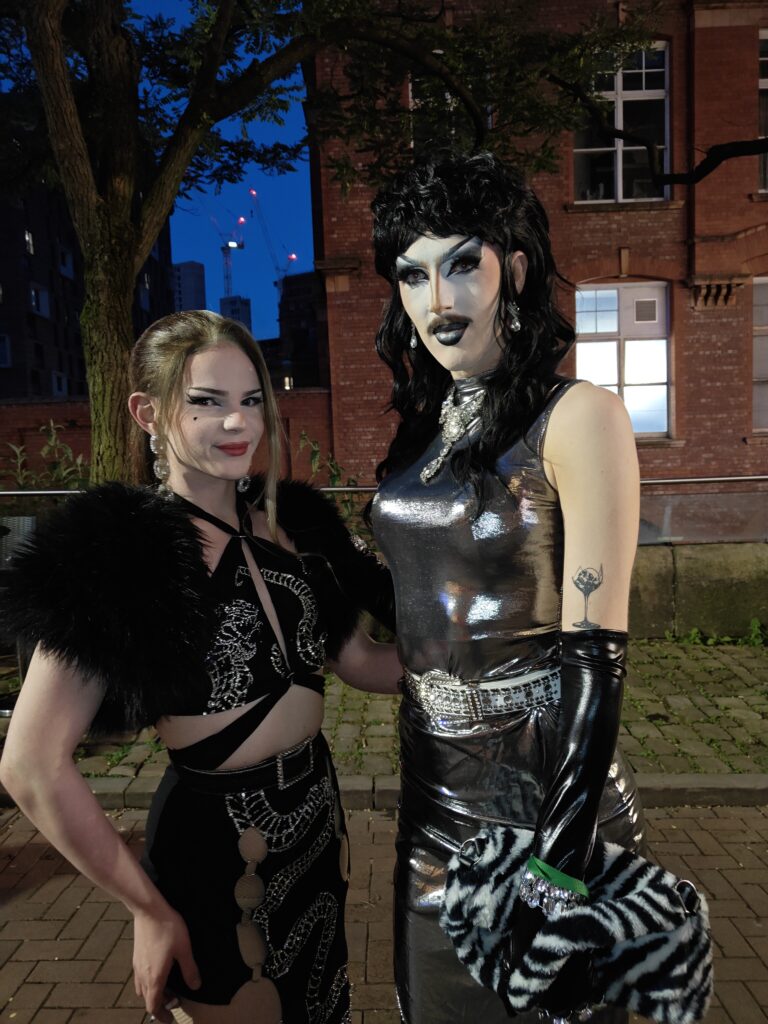
We’ll start our listing with several of the best Canal Street venues, none of which usually charge a cover, followed by places that are more distinctive—usually located off the strip but not too far.
Via Manchester (28-30 Canal St., Manchester). This large multi-room venue, Manchester’s biggest, gives patrons lots of options for taking in the drag show, having a yak with friends or manoeuvring onto the dancefloor. It’s a pub that wants to be a nightclub—and sometimes turns into one.
New Union Hotel (111 Princess St., Manchester). The 19th-century drinking establishment that established Canal Street as an LGBTQ+ space is still going strong. It’s a showbar, yes, but also a place for a pint in the bar or out on one of the tables on the street.
REM/The Rembrandt Manchester/Club Tropicana (33 Sackville St., Manchester). There’s been a pub here since 1851, when the canal was full of sailors, not lost high-heeled shoes and glitter. REM is what faces the street, while Club Tropicana is an 1980s-themed dance club tucked behind. Probably has more testosterone, and a bit more maturity, than other Canal Street venues.
ON Bar Manchester (46 Canal St., Manchester). Though Canal Street venues tend to be all things to everyone, ON Bar does lean more into performances and showcases many of the city’s funnier queens.
New York New York Bar (94-98 Bloom St., Manchester). Though it’s not right on Canal Street, this woman-owned club has all the same ingredients: a raucous mixed queer-straight crowd who get wound up by drag and then take their own star power onto the dance floor.
G-A-Y Manchester (63 Richmond St., Manchester). The U.K.’s best-known gay nightclub brand (it’s part of the franchise that includes G-A-Y and Heaven in London) has mastered a potent alchemy of drink specials, drag shows and dance music that makes you want to jump up and down and sing along. You’re going to meet your next BFF here.
Cruz 101 (101 Princess St., Manchester). Opened in 1992 and housed in an old warehouse, this is Manchester’s longest-running gay club. Depending on the night, the music might be a bit edgier than at other venues. Is this the closest thing to Babylon from the original Queer as Folk?
Vanilla/Area Manchester (50 Sackville St., Manchester). The city’s only bar focused on queer women has moved into a shared space called Area Manchester, which hosts various parties on different nights. On Fridays and Saturdays, it’s for women. Fashionable and fun, Vanilla is one of the few queer spaces in the city where you can regularly hear R&B and Afrobeats.
Butch Revival (various locations, often 50 Sackville St., Manchester). This occasional club night is a moveable feast for butches, studs and their lesbian admirers. Their parties are some of the biggest for queer women in the north of England.
Diesel Dyke Club (various locations). This swaggering club hosts occasional club nights and no-cover pub takeovers. They don’t police the term “dyke,” and they welcome all queers, but TERFs, SWERFs and straight cis men should give this a pass.
The Eagle Bar (15 Bloom St., Manchester). Part of the gay Eagle universe, this one is a men-only member’s club—in the downstairs pub and dance bar, at least. The main floor has a Victorian-inspired lounge vibe. Special events range from trivia night to bears to fetish (puppy masks welcome), some of which are naughtier than others.
Where gay and bi men can have fun
The Eagle Bar (15 Bloom St., Manchester). Some events hosted by the Eagle are sex-positive.
Basement (Fourways House, 18 Tariff St., Manchester). This large, clean, well-maintained gay bathhouse has been around for 20 years. The front part contains the wet and dry saunas, and the hot tubs, but there is a discreet hallway that leads to another part of the business where a bar, a maze and cabins are the attraction.
Heat Sauna (48a Churchgate, Churchgate Chambers, Cheshire). About a half hour drive outside the city centre—so probably not for visitors just spending a weekend—this well-established gay bathhouse hosts several regular nights including some for trans men/trans masculine people and for swingers.
Where to shop
Clonezone Manchester (36-38 Sackville St., Manchester). The local outlet of the U.K.’s favourite gay outfitter has all the jockstraps, harnesses, poppers and assorted sex toys you’d expect—and some cool T-shirts.
Kiku Boutique (100 Tib St., Manchester). This indie boutique sells bespoke corsets, lingerie, headgear and clothing, handmade by corsetieres, milliners and designers. A little Playboy bunny, a little Victorian lady, a little burlesque.
Queer Lit (27 Great Ancoats St., Manchester). After a few experiments in retailing in other locations, this indie queer bookshop opened in its current location in 2023, pairing itself with the coffee shop Social Refuge to create a spacious modern environment that’s as suited to lounging as it is browsing.
Afflecks (52 Church St., Manchester). This wacky multi-storied shopping emporium is home to dozens of small independent shops, many with a queer and/or indie bent. Think “Daddy” T-shirts, vintage dresses, dangly earrings, ’80s rock posters, profane greeting cards and tattoo artists. The Gay Pride Shop, on the second floor, might have the highest density of rainbow flag–related mementos known to humanity. Keeping track of the art scattered through the hallways and staircases can help shoppers avoid getting lost in the maze.
UNITOM (1a Stevenson Square, Manchester). The white-walled spaces of this independent bookshop and magazine store makes it feel like a gallery, which makes sense since they specialize in visual arts. This ain’t your father’s newsagent. The store’s home, Stevenson Square, is a key hangout out in the hipster-fuelled Northern Quarter and has an array of appealings bars, pubs and cafés.
Manchester Craft & Design Centre (17 Oak St., Manchester). Another Northern Quarter hangout for the cool kids, this two-storey emporium is home to works—some practical, some whimsical—by local artists and artisans.
Manchester Arndale (49 High St., Manchester). Built in the 1970s and redeveloped after the 1996 Manchester Bombing, this is a remarkably large downtown shopping mall, known for its food market as well as its national and international fashion brands. If it doesn’t contain enough of-the-moment merchandise for you, there’s Selfridges Manchester Exchange department store just across Corporation Street, and in the other direction, across Market Street, there’s a Primark—let your price point guide you.
Editor’s note: The cost of the writer’s trip to Manchester was covered by VisitBritain and VisitManchester. The sponsors of the trip did not direct or review coverage. The views expressed are the writer’s own.
